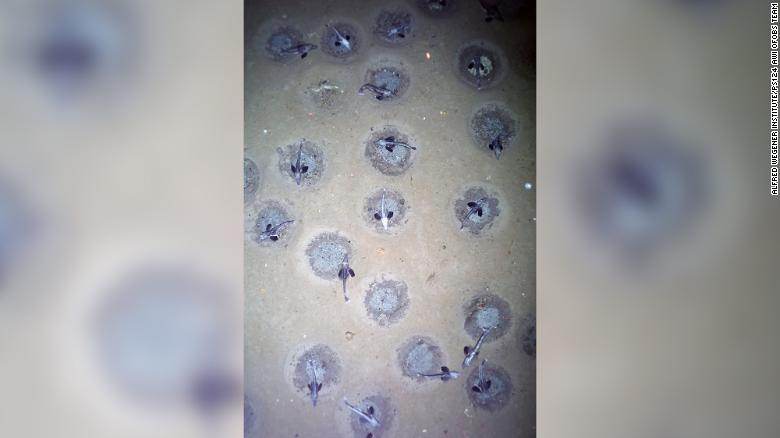In Antarctica's ice-covered Weddell Sea, a unique and previously unknown ecosystem covering an area the size of Malta has been discovered, home to 60 million fish. A fascinating discovery reveals that little is known about the depths of the sea. Considered to be the largest in the world, the gigantic colony contains the amazing icefish (Neopagetopsis ionah) with a transparent skull and transparent blood. Icefish are the only vertebrates that do not have red blood cells.
In order to survive at such low temperatures, we have developed a floating protein that stops the growth of ice crystals in clear blood. The
breeding colony was discovered in February 2021 by the German polar research ship Polarstern, which was surveying the seabed about half a kilometer below the ship. A car-sized camera system attached to the stern of the vessel was used to transmit video to the deck while towed. An expedition focused on the
current was surprising to find a nest separated by a muddy seabed and circular rock formations. Otun Perser, a researcher at the Alfred Wegener Institute in Bremerhaven, Germany, said: "We watched the fish nest for four hours and covered about 6 kilometers (3.7 miles) of the seabed during that time." Said. . He is the lead author of a study of smelt colonies published Thursday in Current Biology. "I'd never seen anything like it in 15 years of being an ocean scientist," Purser said. "After that dive, we emailed the experts on shore who know about fish like this. They said, yep, this is pretty unique."
Four further camera dives revealed the dramatic extent of the breeding colony and its striking uniform nature. "This is indeed a surprising discovery," said John Postlethwait, a professor of biology at the University of Oregon, who studies the fish. He wasn't involved in the research. “That's important too. The scale of biomass, at least for me, is unexpected. And the extent to which fish alter bottom sediment structure (a) creates habitat for communities that support the diverse species that have disrupted the food web,” he added. According to the researchers, the colony covers an area of more than 240 square kilometers (93 square miles). With an average of 1 nest per cubic metre, they estimate that the colony has about 60 million active nests. Each equally spaced nest was about 15 centimeters (6 inches) deep and 75 centimeters in diameter and contained an average of 1,735 eggs. Most are guarded by one adult fish. Some nests contain only eggs, some are unused.
The nests are evenly spaced across the sea bed.
"The distance between nests is equal to the distance between birds on a telephone line," Postlethwaite added via email. “Some animals like to be sociable, but there are limits. Congregating may give them advantages for finding mates but provides a rich point source for predation."
The fish appear to be attracted by an area of warmer water, which is around 2 degrees Celsius warmer than the surrounding sea bed, which is a chilly 0 degrees Celsius, said Purser. (Sea water freezes at a lower temperature than fresh water.)
The researchers have deployed two camera systems to monitor the icefish nests until a research vessel returns. The hope is that photographs will catch more details about the fish nest ecosystem. One question researchers want to answer is how long the adult fish guard the eggs experts suspect it could be months and whether it was the male or female standing watch. "It appears that that the reproductive behavior of most, if not all, icefishes, revolves around male courtship of females through building a 'good' nest, said icefish expert H. William Detrich, professor emeritus of biochemistry and marine biology at Northeastern University, via email. He wasn't involved in the research. The findings reveal a globally unique ecosystem, according to the researchers, and they say it should be designated a protected area. "The implications for conservation of this species are clear a marine protected area should be established in the Weddell Sea to prevent exploitation of this icefish species, " Detrich added.
While the Weddell Sea is covered with sea ice all year round, the ice is relatively thin three feet thick meaning that photosynthesis can still take place and life can thrive. Purser said the bottom of the Weddell Sea is far from barren, where sea sponges, corals, octopuses and starfish lurk along the seabed. He said about 2,000 seals also live in the area, and although there is no solid evidence, it is possible that they will dive into breeding areas and eat smelt.
Purser says there are similar nesting freshwater fish species, but scientists "have never seen such colonies in the deep sea."
“I think we covered only 1% of the bottom of the Weddell Sea, but who knows what else is hidden here. I am sure there are many gaps in our knowledge of the depths of the sea.”
The News and Photo from :- CNN





No comments:
Post a Comment